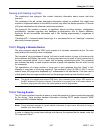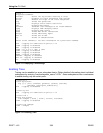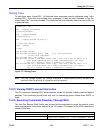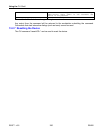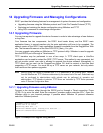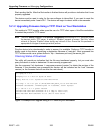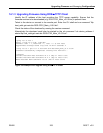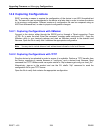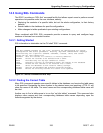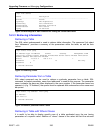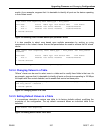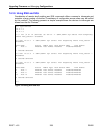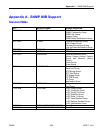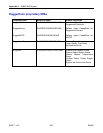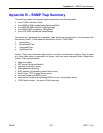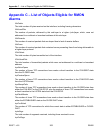
Upgrading Firmware and Managing Configurations
RS400 255 ROS™ v3.5
14.3 Using SQL Commands
The ROS™ provides an “SQL-like” command facility that allows expert users to perform several
operations not possible under the user interface, namely:
• Restoring the contents of a specific table, but not the whole configuration, to their factory
defaults
• Search tables in the database for specific configurations
• Make changes to tables predicated upon existing configurations
When combined with RSH, SQL commands provide a means to query and configure large
numbers of devices from a central location.
14.3.1 Getting Started
SQL information is obtainable via the CLI shell “SQL” command:
Figure 181 The SQL command and SQL help
14.3.2 Finding the Correct Table
Many SQL commands operate upon specific tables in the database, and require the table name
to be specified. Navigating the menu system to the desired menu and pressing <CTRL Z> will
show the name of the table. The menu name and the corresponding database table name will
be cited.
Another way to find a table name is to run the “sql info tables” command. This command also
displays menu names and their corresponding database table names depending upon the
features supported by the device.
>sql
The SQL command provides an 'sql like' interface for manipulating all system
configuration and status parameters. Entering 'SQL HELP command-name' displays
detailed help for a specific command. Commands, clauses, table, and column
names are all case insensitive.
DEFAULT Sets all records in a table(s) to factory defaults.
DELETE Allows for records to be deleted from a table.
HELP Provides help for any SQL command or clause.
INFO Displays a variety of information about the tables in the database
INSERT Allows for new records to be inserted into a table.
SAVE Saves the database to non-volatile memory storage.
SELECT Queries the database and displays selected records.
UPDATE Allows for existing records in a table to be updated.



